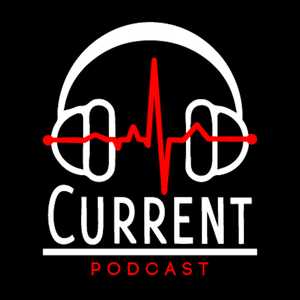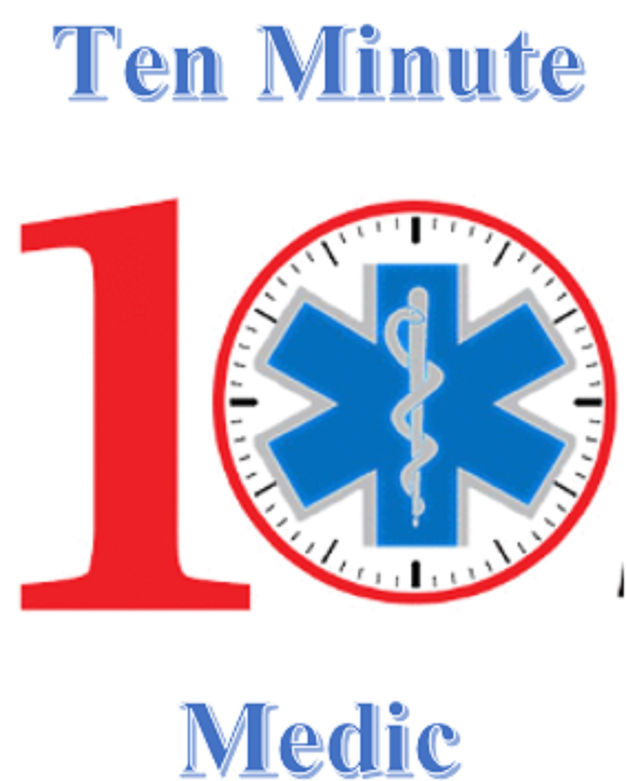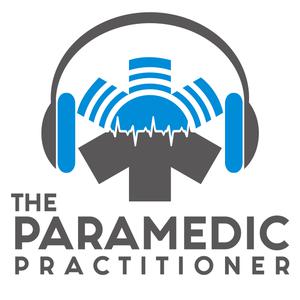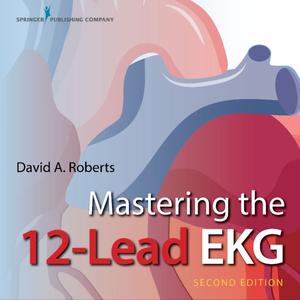
Current ECG Podcast
David Klein
Current ECG Podcast
- 21 minutes 32 secondsEp.42 - Posterior RCA Occlusions with Matt Pigott
This episode features Matt Pigott from Medic Minute with Matt to share his insights about Posterior RCA Occlusions.
Also In This Episode
- Anatomy of the RCA
- Scenario - 62 Y/O F C/C of nausea
- Standard 12 lead placement
- Modified 12 lead
- Posterior RCA diagnosis
- LAD Occlusions
- Anatomy of the LAD
- Scenario - 58 Y/O m C/C of chest pain
- Hyperacute T waves
Subscribe to the video version of this podcast to have access to the visuals that accompany the audio as well as additional tools and resources to help improve your understanding.
Subscribe now at CurrentECG.com
And Stay Current
9 March 2022, 5:00 pm - 24 minutes 17 secondsEp.41 - 12 Lead ECG and Coronary Anatomy with Matt Pigott
This episode features Matt Pigott from Medic Minute with Matt to share his insights about 12 Lead ECG and Coronary Anatomy.
Also In This Episode
- Before you get started
- Looking at your 12 Lead
- How does this reflect Coronary Anatomy?
- Changes in morphology
- Perfusion issue
- Blood flow through the heart
- Electrical issue
- Electrolyte issue
- Cardiac action potential
- PQRST segment
- "STEMI mimics"
- RCA Occlusions
- 55 y/o patient case example(s)
- Proximal or Distal?
Subscribe to the video version of this podcast to have access to the visuals that accompany the audio as well as additional tools and resources to help improve your understanding.
Subscribe now at CurrentECG.com
And Stay Current
26 January 2022, 5:57 pm - 12 minutes 55 secondsEp.40 - Let’s Get Hyper about T Waves
On this episode Dave shares about acute coronary syndrome and some of the important ECG shapes and morphologies that can occur in the very beginnings of the injury to the Cardiomyocytes of your heart.
Also In This Episode
- Abnormally wide T waves
- ECG Tracing examples
- Don't get confused with Hyperkalemia
Subscribe to the video version of this podcast to have access to the visuals that accompany the audio as well as additional tools and resources to help improve your understanding.
Subscribe now at CurrentECG.com
And Stay Current!
3 November 2021, 9:00 am - 57 minutes 58 secondsEp.39 - ST Elevation is NOT Infarction
On this episode Dave is joined by Dr. Jerry W. Jones, MD FACEP FAAEM, to discuss why ST elevation is not always an infarction. Dr. Jones will highlight why we need to think about morphology and shape when interpreting ECGs and why reciprocal changes are just as important as the primary changes and more!
Dr. Jones is the CEO and Founder of Medicus of Houston. Medicus of Houston is a continuing medical education company that specializes in advanced ECG interpretation and instruction.
He is a Board-certified emergency physician, author, speaker, instructor and and internationally-recognized expert in electrocardiography.
Dr. Jones is a diplomate of the American Board of Emergency Medicine who has practiced internal medicine and emergency medicine for over 40 years.
Also In This Episode
- How to diagnose real infarctions
- How ischemia damages the cell
- Cells creating electrical current
- How electrical current creates is responsible for ST depression and elevation
- Systolic and Diastolic currents of injury
- How not to confuse subendocardial ischemia with reciprocal change
Subscribe to the video version of this podcast to have access to the visuals that accompany the audio as well as additional tools and resources to help improve your understanding.
Subscribe now at CurrentECG.com
And Stay Current!
6 October 2021, 9:00 am - 43 minutes 50 secondsEp.38 - Can You Keep Up with the Pace?...Pacemakers and ICD's with Dr. Hedayati
In this episode, Dave is joined by Tarlan Hedayati, MD, FACEP, to discuss how to decipher dysrhythmias in devices such as Pacemakers and ICD's.
Dr. Hedayati is a practicing Emergency Physician in Cook County, Chicago. She is also the Associate Professor and Chair of Education for the Emergency Medicine Department.
Also In This Episode
- What does normal paced rhythm look like?
- ECG Tracing example
- Failure to Pace
- What does a magnet do to a Pacemaker?
- Failure to Capture
- ECG Tracing examples
- Pacemaker X-Ray examples
- Twiddler's Syndrome
- Failure to Sense
- ECG Tracing examples
- Pacemaker Mediated Tachycardia
- Runaway Pacemaker
- Magnet in ICD's
- Review - Look at the ECG
- Look at the rate?
- Are there pacer spikes?
- Are there p's and/or QRS after every spike?
- Are the spikes appropriate?
.
Connect with Tarlan Hedayati:
Twitter: @HedayatiMD https://twitter.com/HedayatiMD
Subscribe to the video version of this podcast to have access to the visuals that accompany the audio as well as additional tools and resources to help improve your understanding.
Subscribe now at CurrentECG.com
And Stay Current!
1 September 2021, 2:52 pm - What does normal paced rhythm look like?
- 12 minutes 29 secondsEp.37 - De Winter's T Waves: OMI vs STEMI
In this episode, Dave shares about moving away from the concept of ST-Elevation Myocardial Infarction (STEMI) and focusing on Occlusion Myocardial Infarction (OMI).
Also In This Episode:
- OMI vs. STEMI
- Patient Case: 70 YO Male
- De Winter's T Waves
- ECG Tracing example
- ECG Diagnostic criteria
- ECG Tracing examples
- Review - Patient Case: 70 YO Male
- Activate Cath Lab
- Take home points
Subscribe to the video version of this podcast to have access to the visuals that accompany the audio as well as additional tools and resources to help improve your understanding.
Subscribe now at CurrentECG.com
And Stay Current!
.
4 August 2021, 9:00 am - 29 minutes 15 secondsEp.36 - Capnography...Smoke from the Flames of Cellular Metabolism!
In this episode, Dave talks about End-tidal CO2 (EtCO2), and how to use Capnography to better assess and treat your patients.
Also In This Episode:
- What is Capnography?
- Patient Case: 25 YO Male
- When CO2 is not exhaled effectively
- Oxygenation and Ventilation
- 4 phases of EtCO2
- EtCO2 and airway management
- Using EtCO2 during cardiac arrest
- Supporting graphs and stats
- Waveform and EtCO2 examples - What do you think is happening with this patient?
- EtCO2 + COPD - Shark fin pattern
- Waveform examples - troubleshooting
- Head injury
- Patient Case: 25 YO Male - revisit
Subscribe to the video version of this podcast to have access to the visuals that accompany the audio as well as additional tools and resources to help improve your understanding.
Subscribe now at CurrentECG.com
And Stay Current!
.
7 July 2021, 9:00 am - 45 minutes 45 secondsEp.35 - Don't Look Here, Look Over There, That's Where the Problem Is! - Reciprocal Changes with Dr. Jones
On this episode Dave is joined by Dr. Jerry W. Jones, MD FACEP FAAEM. Dr. Jones is the CEO and Founder of Medicus of Houston. Medicus of Houston is a continuing medical education company that specializes in advanced ECG interpretation and instruction.
He is a Board-certified emergency physician, author, speaker, instructor and and internationally-recognized expert in electrocardiography.
Dr. Jones is a diplomate of the American Board of Emergency Medicine who has practiced internal medicine and emergency medicine for over 40 years.
Also In This Episode
- What is a Reciprocal Change?
- The rules of Reciprocal Change
- Only in the same plane as ST elevation
- The leads manifesting reciprocal change should be as close to 180 degrees away from the leads with ST elevation as possible.
- ST Elevation / Reciprocal Pairs
- Inferior Epicardial Ischemia with Reciprocal Change
- Basolateral Epicardial Ischemia with Reciprocal Change
- Posterior / Lateral Epicardial Ischemia
- Epicardial Ischemia with Reciprocal Change ECG Tracing example
- An impulse travelling perpendicular to a lead axis cannot be seen in that lead.
- ECG Tracing example
- Ventricular Aneurysm
- The Problem with Anterior ST Elevation
- LAD Occlusion and Reciprocal Changes
- ECG Tracing examples
- Acute Pericarditis
- Danger is hiding in Reciprocal changes
- ECG Tracing example
- ECG Tracing example
- Subendocardial Ischemia or Reciprocal Change?
- ECG Tracing examples of Reciprocal changes
- ECG Tracing examples of Subendocardial Ischemia
- Six points to remember
- Dave's take-home points
Subscribe to the video version of this podcast to have access to the visuals that accompany the audio as well as additional tools and resources to help improve your understanding.
Subscribe now at CurrentECG.com
And Stay Current!
2 June 2021, 9:00 am - 26 minutes 31 secondsEp.34 - All PEA is not the Same: Pseudo PEA vs. True PEA with Tarlan Hedayati, MD, FACEP
In this episode, Dave is joined by Tarlan Hedayati, MD, FACEP, to discuss how to differentiate between Pseudo PEA and True PEA.
Dr. Hedayati is a practicing Emergency Physician in Cook County, Chicago. She is also the Associate Professor and Chair of Education for the Emergency Medicine Department.
Also In This Episode
- Patient Case: 57 YO Male
- POC Ultrasound
- Pulse checks, are fingers are dumb
- POCUS for Pulse
- FEEL for cardiac activity (Focused Echocardiographic Evaluation in Life support)
- The downside of POCUS
- POCUS in the emergency department
- CASA (Cardiac Arrest Sonographic Assessment)
- Tamponade
- RV strain
- Motion
- PEA Evaluation
- Pressor Infusions vs. Standard ACLS
- PEA Bottom line: POCUS & minimize pauses
Connect with Tarlan Hedayati:
Twitter: @HedayatiMD https://twitter.com/HedayatiMD
Subscribe to the video version of this podcast to have access to the visuals that accompany the audio as well as additional tools and resources to help improve your understanding.
Subscribe now at CurrentECG.com
And Stay Current!
5 May 2021, 9:00 am - Patient Case: 57 YO Male
- 23 minutes 29 secondsEp.33 - The Ultimate Compressor
In this episode, Dave shares the importance of practicing quality CPR with the goal of being the 'ultimate compressor'.
Also In This Episode:
- Patient case which deteriorates to cardiac arrest-
-
- AHA/ILCOR ECC guidelines to begin immediate chest compressions and application of the cardiac monitor with an attempt at defibrillation.
- Work as a team on the choreography of resuscitation. Ensuring no one provider has a cognitive overload and is able to focus on a specific assigned task.
- Ensure the provider who is performing the skill of chest compressions is able to focus on the appropriate rate, minimizing pauses, and allowing for complete chest recoil.
- CPP - Coronary Perfusion Pressure is the key to providing the cardiomyocytes with the sugar, water, oxygen they need to survive by perfusing the coronary ostia and building CPP.
- Post ROSC care should include maintaining a systolic blood pressure of at least 90mmhg, 02 sats between 94-99%, patient normothermia, 12 lead ECG interpretation and finally working with other health care providers on a coordinated transfer of care.
Subscribe to the video version of this podcast to have access to the visuals that accompany the audio as well as additional tools and resources to help improve your understanding.
Subscribe now at CurrentECG.com
And Stay Current!
7 April 2021, 8:00 am - 34 minutes 38 secondsEp.32 - Feel The Squeeze...Oh No! It's Medical Math
In this episode, Dave is joined by Brad Reid to discuss Medical Math and how you can be sure that you are making accurate calculations at 3 o'clock in the morning when you are hungry and tired!
Brad is an Advanced Care Paramedic in Nova Scotia and currently is the Program Manager for Medavie HealthEd that delivers Primary and Advanced Care Paramedic programs. Brad has worked as a Paramedic in Nova Scotia for 25 years. He also continues to work clinically as a Department Paramedic for the Nova Scotia Health Authority.
Also In This Episode:
- Patient example: 63 Y/O F
- Starting with the basics
- Patient example: Dopamine infusion
- Medical Math
- What do we need?
- What information do we have?
- How much do we need?
- What is the drip rate?
- Is there another equation? Yes!
- The Clock Method
- The Digital Method
More about Brad:
Brad has been involved in education for over 20 years. Initially delivering programs for St. John Ambulance, Brad helped develop the Maritime School of Paramedicine delivering the first Primary Care Program in 2001. Brad obtained his diploma in Adult Education from St. Francis Xavier University.
Brad has represented Nova Scotia as the Provincial Director, and Vice President for the Society of Prehospital Educators (SPEC) and held the position of Medical Advisor, ACP for the Professional Standards and Accreditation Committee for St. John Ambulance National.
Subscribe to the video version of this podcast to have access to the visuals that accompany the audio as well as additional tools and resources to help improve your understanding.
Subscribe now at CurrentECG.com
And Stay Current!
3 March 2021, 10:00 am - More Episodes? Get the App
Your feedback is valuable to us. Should you encounter any bugs, glitches, lack of functionality or other problems, please email us on [email protected] or join Moon.FM Telegram Group where you can talk directly to the dev team who are happy to answer any queries.
 Master Your Medics
Master Your Medics
 Ten Minute Medic
Ten Minute Medic
 Medic Minutes
Medic Minutes
 The Paramedic Practitioner
The Paramedic Practitioner
 Mastering the 12 Lead EKG
Mastering the 12 Lead EKG